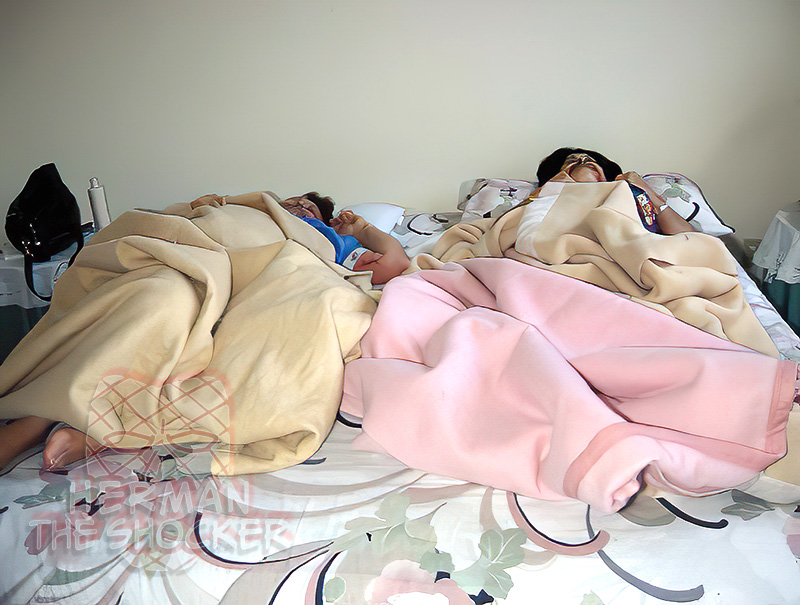Four friends came from South America to vacation for a week (Probably Florida c.a. 2000). When one of the visitors failed to return to work in South America early the following week, worried family members called another woman who went to the vacation house to check on the four visitors. A blue car was parked on the driveway, in front of the closed garage. The woman entered the house with a key. By the time she climbed one flight of stairs to the landing on the second floor, she had a headache. She went into the master bedroom, saw two women dead in bed (Fig.1), and ran back downstairs to call the police.
A red van parked in the garage had an empty gasoline tank; the keys were in the ignition, and the ignition was turned on. A third female victim was in an upstairs bathroom; she was the person who had driven the van into the garage and apparently forgot to turn it off. A young man dead on the floor of a smaller bedroom had driven the blue car back to the house. All four bodies were in early putrefactive decomposition.
The woman on the right side of the bed in the master bedroom had bright red purge fluid draining from the nostrils. Her hands were clenched in fists on her upper chest (Fig.2). The young woman in the bathroom also had her hands clenched in fists (Figs.3-4). Her livor mortis was bright red (Figs.5-6). The young man in the smaller bedroom also had bright red lividity (Fig.7).
Autopsy of the four victims disclosed no anatomic cause of death. All four victims had lethal concentrations of carbon monoxide. The two women with the clenched fists likely suffered seizures prior to death. Investigation of the house disclosed that the intake for the air conditioner was in the garage, and had sucked in fumes from the running van. The cause of death for all four victims was acute carbon monoxide toxicity.
Take-home message
When more than one person is dead at a scene with no apparent trauma, and especially if the bodies are in a similar stage of decomposition, think of an environmental cause such as carbon monoxide toxicity, sulfuryl fluoride (insecticide) toxicity, etc. The scene must be made safe and/or the investigators must have personal protective equipment appropriate for the particular safety hazard before they are allowed to make entry.
Points to consider
- Each victim must be photographed and documented individually.
- Each victim must be autopsied and have specimens taken for toxicology.
- Full toxicology must be requested on the specimens taken from each victim.
- Specimens in addition to the routine vitreous, blood, bile, urine, gastric contents, liver, and brain may need to be collected, depending on the toxic substances involved.
- The terminology carbon monoxide toxicity is preferred to carbon monoxide poisoning because the word poisoning can connote intent.
Latest posts














